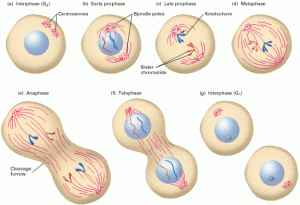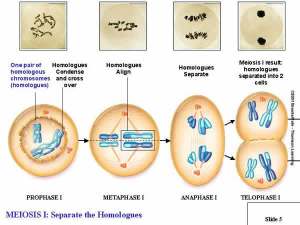Lem4 Protein the new ‘Traffic Policeman’ in cell division
A traffic policeman standing at a busy intersection directing the flow of vehicles may be a rare sight these days, but a similar scene appears to still frequently play out in our cells. A protein called Lem4 directs a crucial step of cell division by preventing the progress of one molecule while waving another through.
For an embryo to grow or a tissue to regenerate, its cells must divide. Overall there are two types of cell division – mitosis and meosis. Now mitosis is the process in cell division by which the nucleus divides, typically consisting of four stages and normally resulting in two new nuclei, each of which contains a complete copy of the parental chromosomes. Also called karyokinesis. The entire process of cell division including division of the nucleus and the cytoplasm.
And meosis is the process in cell division in sexually reproducing organisms that reduces the number of chromosomes from diploid to haploid (half the original number). Meiosis involves two consecutive divisions of the nucleus and leads to the production of reproductive cells (gametes) in animals and to the formation of spores in plants, fungi, and most algae (the haploid spores grow into organisms that produce gametes by mitosis). Meiosis begins when the chromosomes, which have already duplicated, condense along the center of the nucleus, and pairs of homologous chromosomes undergo crossing over, whereby some of their genetic material is exchanged.
When one of our cells divides to give rise to two, the membrane that surrounds the cell’s nucleus – the nuclear envelope – has to be broken down and later rebuilt, once the chromosomes have been dragged apart. For this re-assembly to take place, a protein called BAF has to have chemical tags called phosphates removed. Changing a protein’s phosphorylation state – its possession or lack of phosphate tags – can involve regulating the activity of proteins that add phosphate, proteins that remove phosphate, or both. a new molecule, Lem4, which acts as a traffic policeman, stopping one protein from adding phosphate tags to BAF and bringing in another protein to remove the existing tags. This happens in both human cells and in the worm C. elegans, so it seems to be a strategy which evolved long ago.

 Through a combination of genetics and biochemical studies, it can be found that, even though the worm version of Lem4 is markedly different from the human version, both perform the same double task at the end of cell division.It would now be interesting to investigate just what prompts Lem4 to start its double-action at the right moment.
Through a combination of genetics and biochemical studies, it can be found that, even though the worm version of Lem4 is markedly different from the human version, both perform the same double task at the end of cell division.It would now be interesting to investigate just what prompts Lem4 to start its double-action at the right moment.
Mitosis in metazoa requires nuclear envelope (NE) breakdown and reassembly. Multiple phosphorylation events drive NE disassembly but how dephosphorylation is regulated to enable reassembly is almost entirely unknown. Lem4 is required for the function of both a mitotic kinase and a phosphatase that act on BAF, an essential effector of nuclear assembly. Lem4 is required for dephosphorylation of BAF by inhibiting its mitotic kinase, VRK-1, in vivo and in vitro. In addition, Lem4 interacts with PP2A and is required for it to dephosphorylate BAF during mitotic exit. By coordinating VRK-1 and PP2A mediated signaling on BAF, Lem4 controls postmitotic NE formation in a function conserved from worms to humans.

Leave a comment